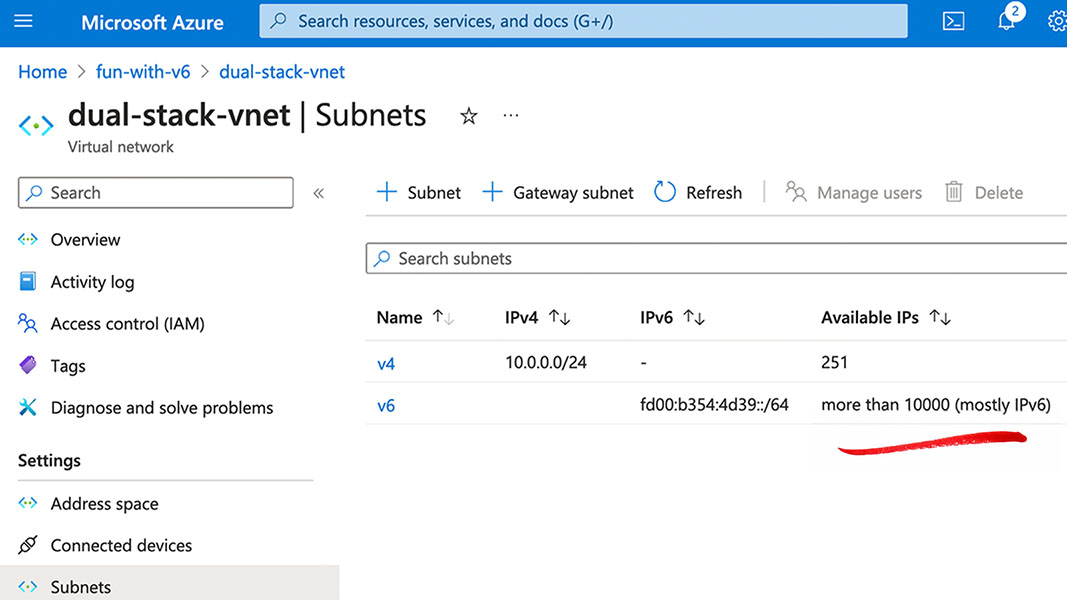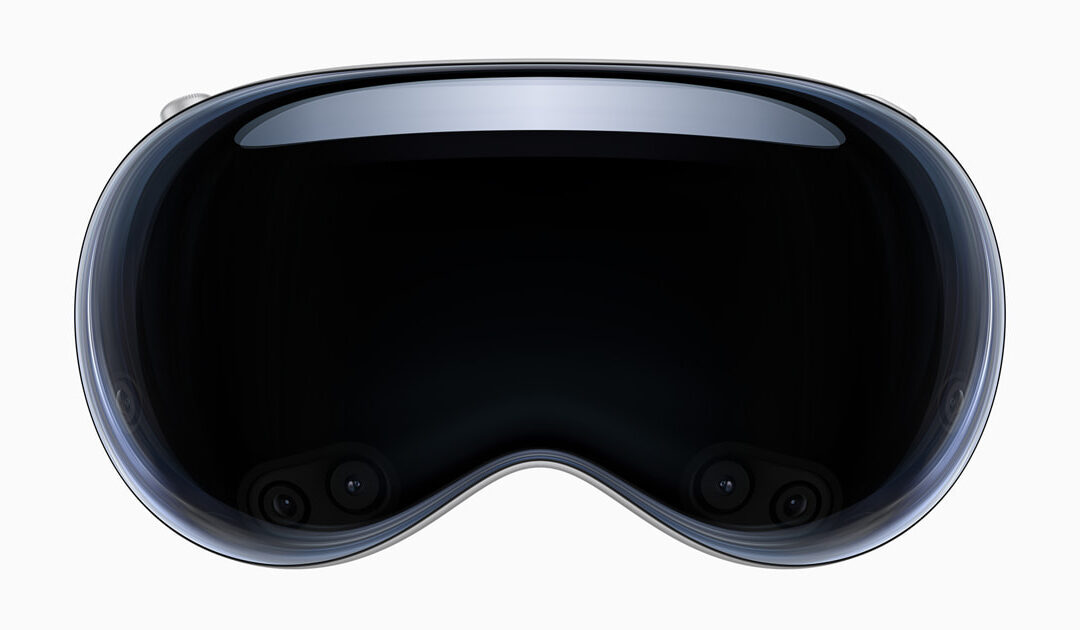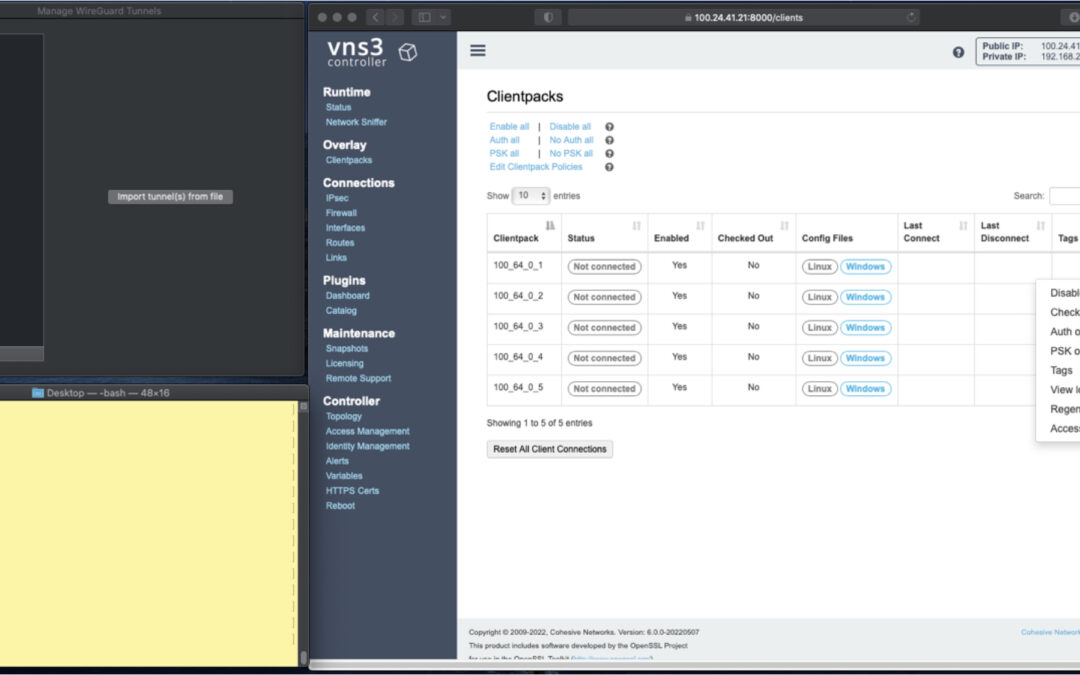The folks at Futuriom put up a piece with suggestions for Cisco as it struggles with who it was and who it wants to be. In that vein here is an anecdote from the early days of Cohesive Networks.

Moving to IPv6 – herein lies madness (Part 1)
Well, it’s finally happened. It’s the “year of IPv6” for the enterprise.
With this transition will come a significant amount of “cognitive load” for enterprise application and infrastructure administrators.
After a decade or more, it appears there will finally be a broad-based move to Internet Protocol version 6. All it took was for Amazon to announce a price increase for the use of IPv4 (Internet Protocol version 4) addresses.
IPv6 has been being deployed incrementally since 2012 – but for many of us it has been via background adoption by consumer products that we may not even been aware of; cable companies and mobile phone vendors providing the infrastructure to our homes and devices.
For the b2b software and infrastructure technology used by the enterprise, it remains new and novel. For example, Amazon Cloud has supported some IPv6 for a number of years, both dual stack and single stack, whilst Microsoft Azure Cloud only began in earnest in 2023. Both platforms still have significant limitations and fragmentation of support across products.

So if the tech titans are just getting their heads around IPv6, what are us “normies” supposed to do?
At Cohesive Networks, our plan was to start slipping in support over the course of this year, finishing sometime in 2025 for an expected enterprise demand in 2026. Why haven’t we supported to date? Frankly, “no one uses it” – in that of the SaaS, PaaS, and BPaaS companies we support, none of them have asked for it……until the AWS price increase. Our metal-based competitors like Cisco and Palo Alto have supported it for years, but from our broad experience working with our customers, and our customer’s customers, and our customer’s customer’s outsourced network support people, the feature was a tree falling in the forest.
While there is a need to expand the available address pool, there is conflict and confusion between the “producer-centric” intelligence that created IPv6 and its revisions and implementations to date, and the practical needs, the “consumer-centric” needs, of the people just trying to get their jobs done.
There is a disconnect between the simple needs that we satisfy with IPv4; deploy a server, deploy 10 servers, deploy a cluster of a couple hundred servers; and the massive scale of IPv6 which immediately confronts its business consumers.
At Cohesive, we have done a decent job of reducing much of networking and security to “addresses, routes, and rules.” But even for us, helping customers deal with three hundred forty undecillion, two hundred eighty-two decillion, three hundred sixty-six nonillion, nine hundred twenty octillion, nine hundred thirty-seven septillion addresses is a challenge.
Ok, that number above is the whole space, so maybe I am being overly dramatic.
Let’s just get an AWS VPC or Azure VNET with a single IPv6 subnet; that should be easier to deal with.
Minimal size is a /64, that sounds better. Oops, that is 18,446,744,073,709,500,000 addresses! (For those of you speaking it aloud, that’s eighteen quintillion, four hundred forty-six quadrillion, seven hundred forty-four trillion, seventy-three billion, seven hundred nine million, five hundred thousand addresses).

And for every virtual network/subnet – another eighteen quintillion.
Now, if I have 10, 100 or 1000 servers to deploy – what does it matter? Just use some addresses and carry on.
True enough, but the fact that they come from a potential space of 1.8 x 10^19 is serious cognitive load that is presented to the infrastructure operators, and it is naive to think this doesn’t come at a cost. As computer memory went from 512k on a “FAT MAC” to 96G on my MacbookPro, I didn’t have to confront the gap between 524,288 bytes and 103,079,215,104 bytes in the normal course of my work.
So what do we do? Well for our part, as we release VNS3 6.6 (with IPv6), we are reducing some of this cognitive load and will be working with our customers to ever-simplify the move to IPv6.
In the meantime, here is a Google Spreadsheet we created for our internal use to help us get our heads around the magnitude of the IPv6 space. Feel free to share: https://docs.google.com/spreadsheets/d/1pIth3KJH1RbQFJvZmZmpBGq6rMMBhqEmfK-ouSNszNY/edit#gid=0



















Recent Comments